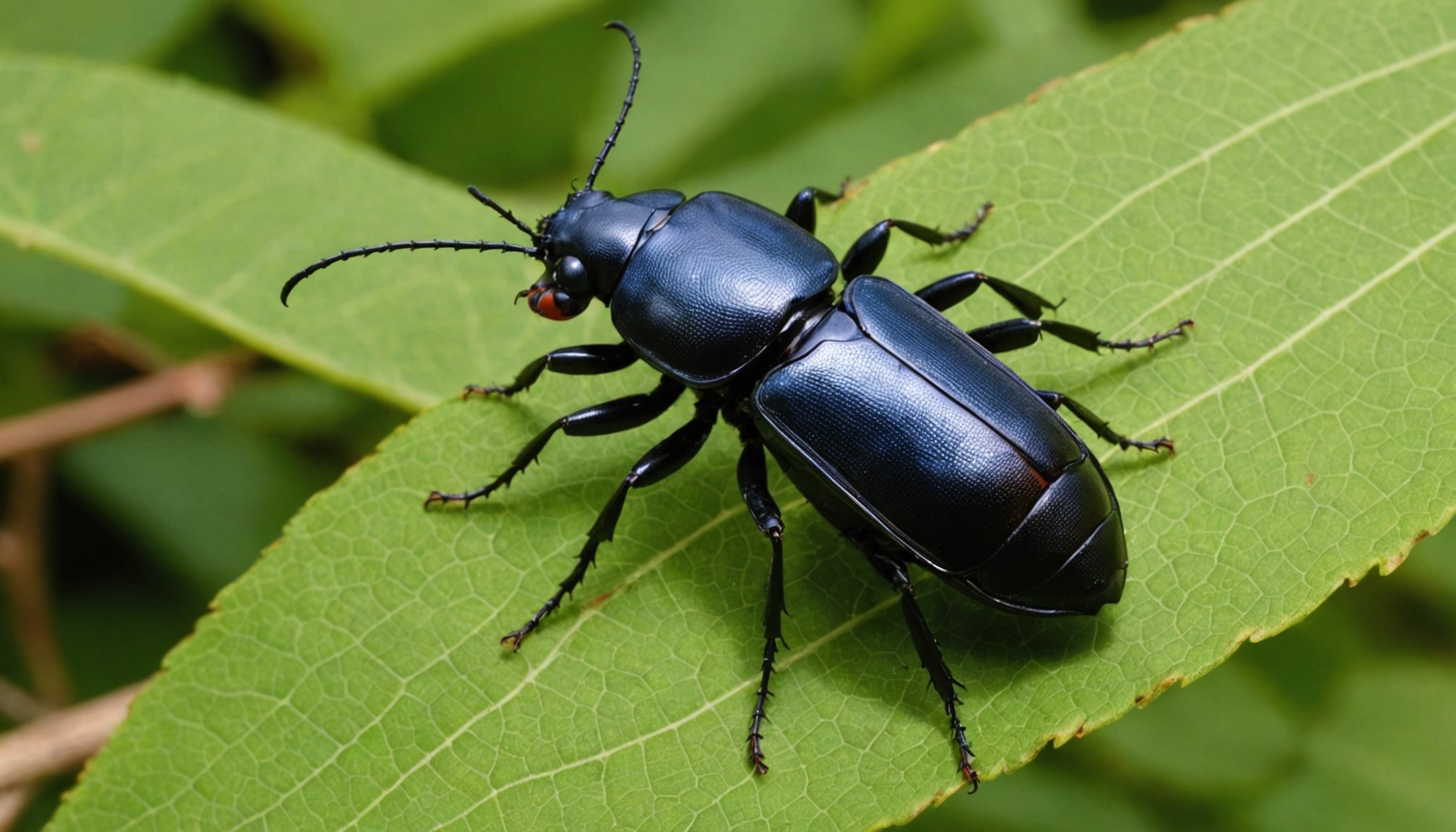Understanding Stag Beetles and Their Importance
Stag beetles are fascinating creatures that have intrigued scientists and nature enthusiasts alike. Known for their striking mandibles, these endangered species are of considerable significance in the UK wildlife scene. The stag beetle conservation effort is vital as these beetles play an essential role in our ecosystem. Their larvae feed on decaying wood, aiding the decomposition process and recycling nutrients back into the soil.
The loss of stag beetles could disrupt this natural balance, highlighting why measures to protect them are crucial. The UK sees a decline in stag beetles due to habitat loss and climate change, underlining the need for preserving their environments. Simple actions, such as maintaining natural woodlands and leaving dead wood in gardens, contribute significantly to conservation efforts.
Topic to read : Empowering uk communities: your role in protecting local bat species
Understanding their ecological roles and importance helps raise awareness about protecting stag beetles from becoming critically endangered species. As part of the UK wildlife conservation strategies, identifying areas with significant stag beetle populations can help target protection measures effectively. The right actions can ensure these magnificent beetles continue to grace our landscapes, maintaining biodiversity and ecological health.
Habitat Requirements for Stag Beetles
For stag beetles, a well-suited habitat is crucial for their survival and reproduction. The core of a stag beetle habitat involves specific conditions that cater to their unique needs. Firstly, stag beetles thrive in environments where there’s a balance between moist and decaying wood, as this provides nourishment and shelter for larvae. Typical stag beetle habitats include areas like woodlands and gardens with an abundant supply of rotting wood.
Topic to read : Discover how night-time curfews can transform urban wildlife in the uk
The soil types preferred by stag beetles are usually nutrient-rich and well-drained yet able to retain adequate moisture. Such soil compositions not only ensure that larvae remain hydrated but also support the decomposition process of wood, creating an optimal breeding ground.
To design a habitat that supports adult stag beetles, focus on replicating these natural conditions. This can be achieved by incorporating different layers of decomposing wood, mixed soil, and moisture-retentive materials in designated garden areas or conservation zones. It’s essential to create an environment that mimics natural forest floors, where these beetles would naturally reside. By doing so, you encourage both larval growth and adult stag beetle health, fostering a thriving population.
Practical Gardening Techniques for Stag Beetle Habitats
Creating a stag beetle-friendly garden involves gardening techniques focused on developing conducive habitats. Start by incorporating native plants known to attract and support stag beetles. Native plants provide the necessary ecosystem balance and encourage biodiversity in your garden. They supply food sources and shelter, seamlessly accommodating the life cycle of stag beetles.
Strategically introduce dead wood and mulch into your garden layout. Stag beetles thrive in environments rich with decomposing wood, as it becomes both a food source and a nesting ground. Place logs and branches throughout your garden, ensuring they touch the soil for easy access. Additionally, create mulch piles using wood chips or bark. These act as mini ecosystems, maintaining moisture and inviting stag beetles to settle.
By tailoring these gardening practices, you promote a balanced environment. This includes creating spaces with varying sun and shade patterns. The diversity of light conditions caters to different beetle preferences and enhances habitat quality. In turn, your garden flourishes as a sanctuary, nurturing the development and growth of stag beetles. By integrating these practical techniques, your garden becomes a lively mosaic that supports the thriving life of stag beetles.
Lifecycle and Behavior of Stag Beetles
Stag beetles showcase a fascinating lifecycle, beginning with the egg stage and culminating in adulthood. Their development proceeds through distinct stages: egg, larva, pupa, and adult beetle. After females lay their eggs in decaying wood, they hatch into larvae—a stage that can last several years depending on environmental conditions such as temperature and food availability.
During the larval stage, stag beetles exhibit specific feeding habits, primarily consuming decaying wood and contributing to ecosystem nutrient cycling. Larvae grow significantly, undergoing several molts before reaching the pupation phase. This metamorphosis process is essential for their transformation into adult beetles.
The mating behavior of adult stag beetles is another intriguing aspect. Males often engage in combat using their mandibles to win mating opportunities, showcasing distinct and behavioural adaptations. Factors such as temperature, humidity, and availability of resources influence these activity patterns.
In terms of parental care, stag beetles exhibit minimal direct involvement post-egg laying. However, the selection of optimal sites for egg deposition indicates an indirect form of parental investment, ensuring larvae have adequate resources for development. Understanding these phases provides insights into the ecological roles and behaviors of these striking insects.
Common Threats to Stag Beetles
Stag beetles face multiple threats that jeopardise their populations and habitats. A significant conservation challenge is the impact of urbanisation, which often leads to habitat loss. As cities expand, many natural environments where stag beetles thrive are destroyed for infrastructure, leaving these beetles with limited spaces to survive.
Furthermore, agricultural practices contribute to the decline in stag beetle populations. Intensified farming often results in the removal of dead wood and old trees, which are crucial for their survival as they serve as habitats and food sources for larval stages. Chemical use in agriculture can also negatively impact stag beetle health and reproduction.
Climate change poses another significant threat to stag beetle populations. Shifts in temperature and weather patterns can affect the availability of habitats suitable for different life stages of the beetle. For example, warmer winters may alter their development cycles, while extreme weather conditions can pose survival challenges.
These threats highlight the importance of targeted conservation efforts to protect stag beetles. By understanding the specific needs and challenges faced by these insects, conservationists can work to mitigate these threats and ensure their survival for generations to come.
Conservation Strategies for UK Gardeners
Gardening enthusiasts can play a crucial role in stag beetle conservation through various local initiatives. One effective approach is creating habitat piles using decaying wood. These structures mimic the stag beetle’s natural environment, providing essential resources for their life cycle. Engaging with this simple conservation strategy boosts not only insect populations but also enhances garden biodiversity.
Collaboration is another pillar of conservation success. Gardeners can work alongside local wildlife organizations to support ecological restoration projects. By participating in surveys or contributing to citizen science platforms, individuals can gather pivotal data about stag beetle habitats and behaviours. Such community involvement often guides broader ecological restoration efforts and boosts local conservation initiatives’ impact.
Moreover, advocating for local conservation policies fortifies long-term efforts to protect stag beetles. Gardeners can join community groups focused on promoting environmentally friendly gardening practices, influencing municipal policies that favour wildlife-friendly approaches. Regularly attending community meetings where local conservation policies are discussed allows gardeners to share insights and lobby for more supportive regulations.
Together, these strategies create a supportive network for stag beetle preservation, ensuring these unique insects continue to thrive in the UK. Engaging in these activities not only protects stag beetles but enriches community and environmental vitality.
Resources and Further Reading
Exploring stag beetle resources offers insightful opportunities for both novice and seasoned enthusiasts. A variety of educational materials are available for those interested in delving deeper into stag beetle conservation.
For comprehensive understanding, consider a few select books and websites. Books like “The Complete Guide to Stag Beetles” provide in-depth information, while websites such as The Stag Beetle Trust offer extensive resources on habitat and conservation strategies. These educational materials are invaluable for anyone looking to expand their knowledge.
In addition to written resources, local workshops and community events are excellent avenues for engaging with the topic. Many communities host conservation-focused events where experts share best practices on creating beetle-friendly environments. These workshops often include practical tips and showcase successful conservation projects, ensuring that attendees have actionable insights.
Furthermore, forming connections with fellow gardeners and enthusiasts is essential. Joining gardener networks can lead to a supportive community where sharing experiences and exchanging advice are commonplace. Engaging in discussions with enthusiasts not only builds individual expertise but reinforces community efforts in conservation. Connecting through these networks ensures a shared commitment to nurturing and preserving stag beetle populations.










